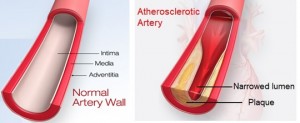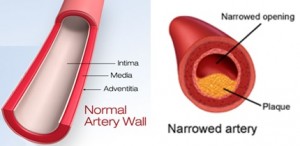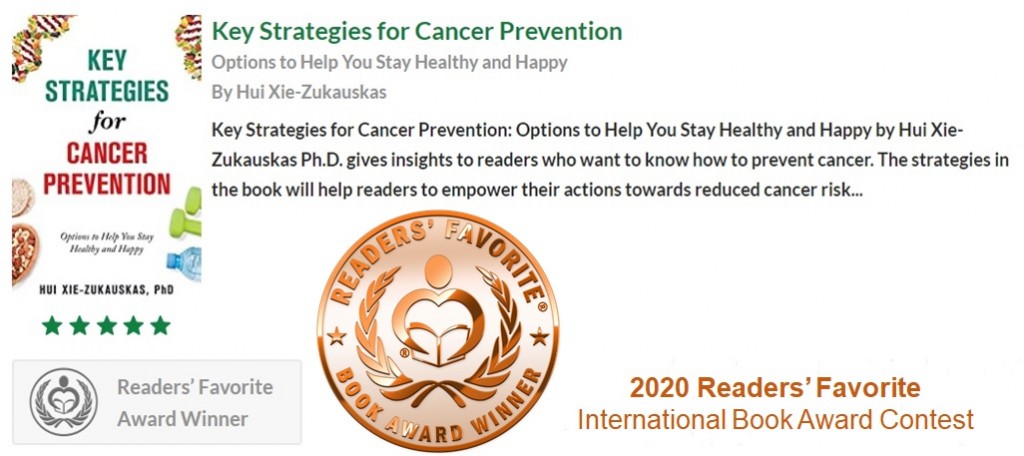Continued on Strategies to control risk factors for stroke –
 Fundamentally, atherosclerosis (particularly in carotid artery) is the primary cause of a significant portion of ischemic strokes. Cardiovascular risk factors can facilitate the progression of atherosclerotic plaque.
Fundamentally, atherosclerosis (particularly in carotid artery) is the primary cause of a significant portion of ischemic strokes. Cardiovascular risk factors can facilitate the progression of atherosclerotic plaque.
Atherosclerotic disease can be asymptomatic initially because it develops over time. When a plaque grows larger enough to reduce blood flow supplying to vital organs (usually >70% stenosis or narrowed vessel), ischemic symptoms may occur. However, it doesn’t mean that smaller plaques (30-40% stenosis) are stable without rupturing to cause a blockage.
How do you prevent or slow down atherosclerosis and stroke by reducing risk factors?
First, before I lay out key preventive strategies, let me quickly draw your attention to some risk factors for stroke, especially those modifiable and those beyond conventional cardiovascular risks. They include:
- 3 Highs (high blood pressure, high blood lipids, and high blood sugar)
- Atherosclerotic disease and/or other cardiovascular disease
- Obesity
- Smoking and alcohol abuse
- Unhealthy lifestyle such as poor diet and physical inactivity
- Atrial fibrillation
- Sleep apnea and other sleep problems
- Chronic kidney disease
- Sickle cell disease
- Illicit drug use (marijuana, cocaine or heroin)
Illicit drug use can increase the risk of all types of strokes. Cannabis or marijuana use has been linked to vasospasm, ischemia, and increased hemorrhagic incidence in the brain, likely due to the vasoactive properties of delta-9-tetrahydrocannabinol (THC), a key component of these plants.
- COVID-19 infection
Acute ischemic stroke and intracerebral hemorrhage are known neurological complications in patients with COVID-19, frequently in individuals 50 years or younger with asymptomatic COVID infection. The possible mechanisms include that blatant inflammatory response and “cytokine storm” associated with COVID cause endothelial injury; that the disease causes arterial and venous clots, thus resulting in poor outcomes.
- Socioeconomic factors (e.g., lower income with inequality in health care, etc.)
Certainly, there are risk factors out of your control, such as age, gender, family history, a history of stroke, transient ischemic attack (TIA) or heart attack, and race. Note that black people have twice the risk as white, particularly young black population.
Here are 8 Key preventive strategies to put into actions:
I’d also like to stress that the point is not just knowing to have a healthy diet or exercise more, but to know important reasons behind and why these strategies work on targets to avert stroke.
1. Lower your blood pressure (BP).
As stroke doesn’t discriminate (by) age, neither does high blood pressure. High blood pressure is a leading cause of stroke. Young people should never disregard their elevated blood pressure, especially those with a family history of stroke or hypertension and black women.
High blood pressure is also the most significant controllable risk factor. Better BP control works, because evidence shows that tight BP control (systolic <130 mm Hg) was associated with a 42% lower incidence of stroke compared with standard control (130–139 mm Hg).
I’ve notified the danger of high BP, including to watch BP in young people. If you haven’t done so yet, please check out this article – Hypertension can be asymptomatic but potentially fatal.
If you have hypertension but with difficulty to manage it, try to figure out where you can target; for example, whether medication not working or side effect issues, whether your diet is healthy, you exercise enough or you have adequate support.
2. Lower your blood cholesterol. Critically, lower your bad cholesterol (LDL).
LDL increases plaque formation or growth in the arterial wall, and high cholesterol can also cause blood clots due to fatty deposits’ suddenly breaking off; if the blood supply to the heart or brain is significantly blocked, heart attack or stroke occurs. Avoiding or limiting diet high in saturated fat and trans fats, along with physical activity, can minimize the risk for stroke.
3. Lower your blood sugar, control your weight, and prevent diabetes.
Diabetes is an independent risk factor for stroke, and with combined overweight, its damaging impact on health piles up over time. Again, diabetes is controllable. Obesity and excess bodyweight pose an increased risk for diabetes, hypertension, heart disease and stroke.
4. Lower your stress level.
Cumulative psychological or mental stress is associated with increased inflammation in the body, and more significantly, with mortality, cardiovascular disease, and stroke.
Depression has a direct or indirect link to a number of illnesses including Alzheimer’s disease, and cardiovascular events. Studies also showed that stroke survivors who experienced high and persistent levels of stress negatively affected the brain repair process and recovery outcome.
5. Quit smoking. Non-smokers should encourage people around you to do so.
This sounds repetitive or nothing new, but this is one of the most valuable things you can do to save lives of people for whom you love and care.
Smoking increases inflammation in the body and plaque buildup in the blood vessels, and makes the blood thicker to facilitate clot formation, leading to heart attack and stroke. Needless to say, toxicities from smoking (e.g., nicotine and carbon monoxide, etc.) ravage your cardiovascular system, thus paving the road to stroke.
Don’t overlook second hand smoking and e-cigarette smoking either.
6. Practice a healthy lifestyle.
Poor diet and physical inactivity contribute to several cardiovascular risk factors and metabolic disorders, thereby presenting an increased risk for stroke. So, get more active, get a nutrients-rich diet, get bodyweight controlled, and get social. Equally important, have a well-balanced life including relationship, financial, and psychological wellbeing.
7. Take seriously alcohol and drug abuse.
Alcohol influences on stroke are not uniform. While low to moderate alcohol consumption (£2 drinks daily for men or £1 for women) may reduce stroke risk, even low alcohol consumption escalates the risk of hemorrhagic stroke.
As mentioned above, regular substance use (e.g., cocaine, heroin, phencyclidine (PCP), amphetamines, and cannabis/marijuana) sets an increased risk for stroke, which is a common predisposing factor for stroke among young individuals.
8. Recognize warning signs of acute cardiovascular events (heart attack and stroke).
Young folks (those under 50) may think this is too early for you. Not anymore! Learn those signs seemingly not related to heart. For instance, sudden poor vision in one or both eyes are reported in 66.1% of stroke patients, and pain or discomfort in the arm or shoulder, 53.8%.
Take-home message:
Stroke is dangerous and deadly. Greater awareness, better control of modifiable risk factors all help prevention and timely treatment.
To reduce atherosclerotic plaque development, know your critical numbers (blood pressure, cholesterols and sugar), monitor them, and keep them at healthy levels, while maintaining a healthy weight through diet and exercise routine. More importantly, take these measures as early in life as possible.
Image credit: heart.org



